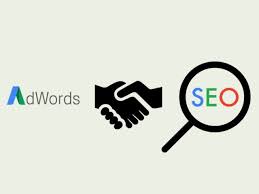
In the world of digital marketing, two powerful tools stand out for driving traffic and increasing visibility: Search Engine Optimization (SEO) and Google Ads. When used effectively, these strategies can propel your online presence to new heights and help you reach your target audience with precision.
SEO is the process of optimizing your website to rank higher in search engine results pages (SERPs). By incorporating relevant keywords, creating high-quality content, and improving user experience, you can boost your organic traffic and attract users who are actively searching for products or services like yours.
SEO is a long-term strategy that requires consistent effort and monitoring. However, the rewards can be significant, as higher search engine rankings can lead to increased website visibility, credibility, and ultimately more conversions.
Google Ads, formerly known as Google AdWords, is a pay-per-click advertising platform that allows businesses to create targeted ads that appear on Google’s search results pages. With Google Ads, you can reach potential customers at the moment they are searching for products or services related to your business.
Google Ads offers a range of targeting options, including keywords, location, demographics, and interests. This level of precision allows you to tailor your ads to specific audience segments and maximize your return on investment.
While SEO and Google Ads are powerful marketing tools on their own, they are even more effective when used together. By combining SEO strategies with targeted Google Ads campaigns, you can create a comprehensive digital marketing approach that covers both organic and paid search channels.
SEO can help improve your website’s overall visibility in organic search results, while Google Ads can provide immediate exposure through paid advertising. Together, they work synergistically to increase brand awareness, drive traffic to your site, and generate leads or sales.
When it comes to digital marketing success, leveraging the power of SEO and Google Ads is essential. By implementing these strategies effectively and consistently monitoring performance metrics, you can position your business for growth in an increasingly competitive online landscape.
Using relevant keywords in your ad copy and landing pages is a crucial tip for maximizing the effectiveness of your SEO and Google Ads campaigns. By incorporating keywords that align with what your target audience is searching for, you can increase the visibility of your ads in search results and improve the quality score of your campaigns. This not only helps attract qualified traffic to your website but also enhances user experience by providing content that matches their search intent. Remember, relevance is key when it comes to optimizing your digital marketing efforts for success.
To maximize the effectiveness of your Google Ads campaigns, it is crucial to optimize your ad titles and descriptions for higher click-through rates. Crafting compelling and relevant ad copy that entices users to click can significantly impact the success of your ads. By incorporating targeted keywords, clear calls-to-action, and unique selling points into your ad content, you can capture the attention of potential customers and drive more traffic to your website. Remember, a well-crafted ad that resonates with your audience can lead to increased engagement and ultimately improve the overall performance of your Google Ads campaign.
Creating compelling ad extensions is a crucial tip when it comes to optimizing your SEO and Google Ads strategy. By incorporating additional information such as site links, callouts, and structured snippets into your ads, you can provide users with more relevant details about your products or services. These extensions not only enhance the visibility of your ads but also improve the overall user experience by offering valuable information upfront. By leveraging ad extensions effectively, you can increase click-through rates, drive more qualified traffic to your website, and ultimately boost conversions.
Regularly reviewing and refining your keyword list based on performance data is a crucial tip for optimizing your SEO and Google Ads campaigns. By analyzing which keywords are driving the most traffic, conversions, and engagement, you can make informed decisions about where to allocate your resources for maximum impact. This iterative process allows you to continuously fine-tune your keyword strategy to ensure that you are targeting the most relevant and high-performing keywords for your business. Keeping a close eye on performance data empowers you to stay ahead of the competition and adapt to changing search trends effectively.
When implementing SEO and Google Ads strategies, it is essential to leverage ad scheduling to target your audience at the most effective times. By analyzing data and understanding when your target audience is most active online, you can schedule your ads to appear during peak engagement periods. This targeted approach ensures that your ads reach the right people at the right time, maximizing the chances of capturing their attention and driving conversions. Ad scheduling allows you to optimize your advertising budget by focusing on high-impact moments when your audience is most likely to respond positively to your message.
Monitoring your SEO and Google Ads campaigns closely and making timely adjustments is crucial to maximizing their effectiveness. By analyzing key performance metrics such as click-through rates, conversion rates, and keyword performance, you can identify areas for improvement and fine-tune your strategies for better results. Regular monitoring allows you to stay agile in response to changing market dynamics and user behavior, ensuring that your campaigns remain optimized and aligned with your business goals. Remember, continuous optimization is the key to sustained success in the ever-evolving landscape of digital marketing.
To optimize the performance of your Google Ads campaigns, it is crucial to test different ad variations to determine what resonates best with your target audience. By experimenting with various ad copy, visuals, and calls-to-action, you can gather valuable insights into which elements drive the highest engagement and conversions. Continuous testing and refinement based on data-driven results will help you fine-tune your ads for maximum impact and ensure that your messaging effectively connects with your audience’s preferences and needs.